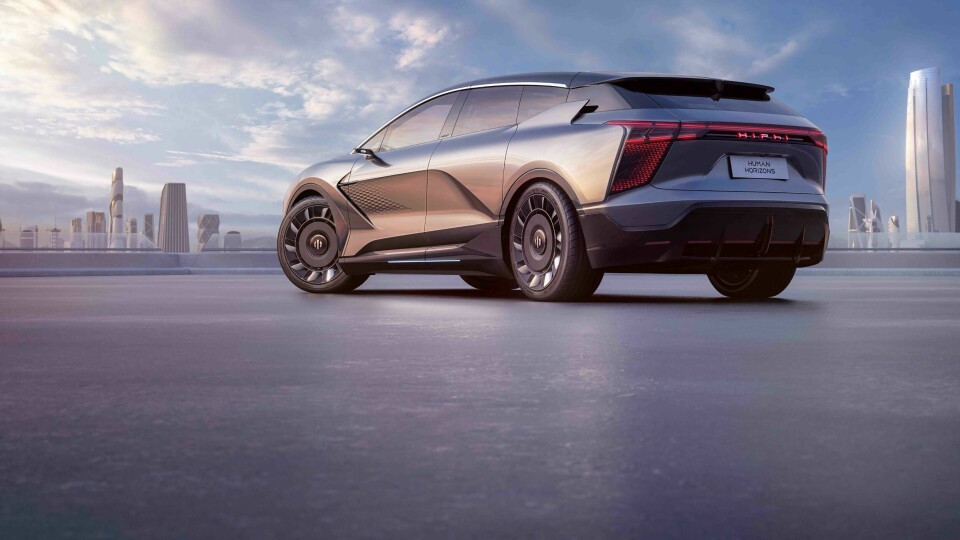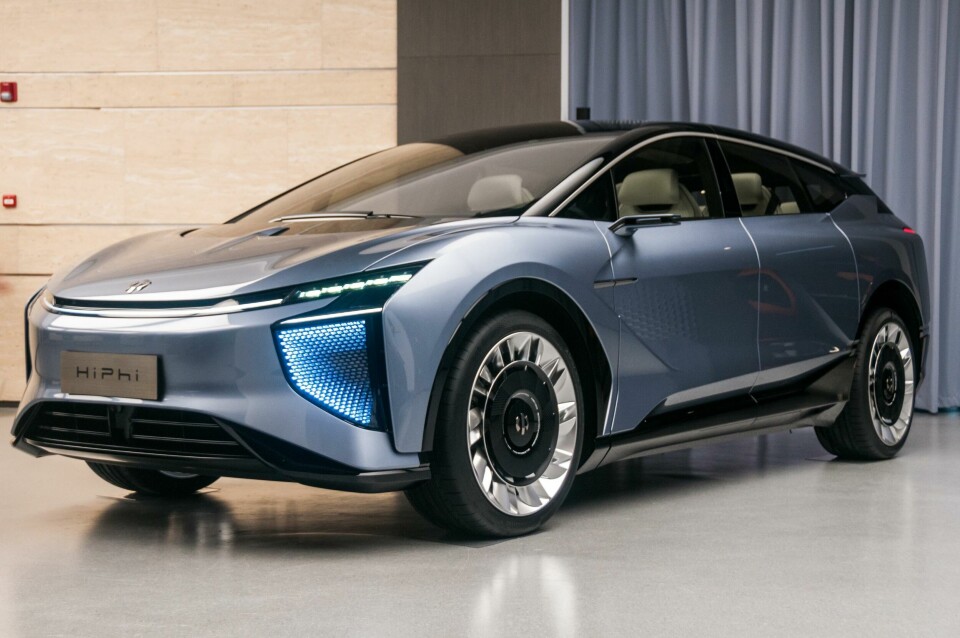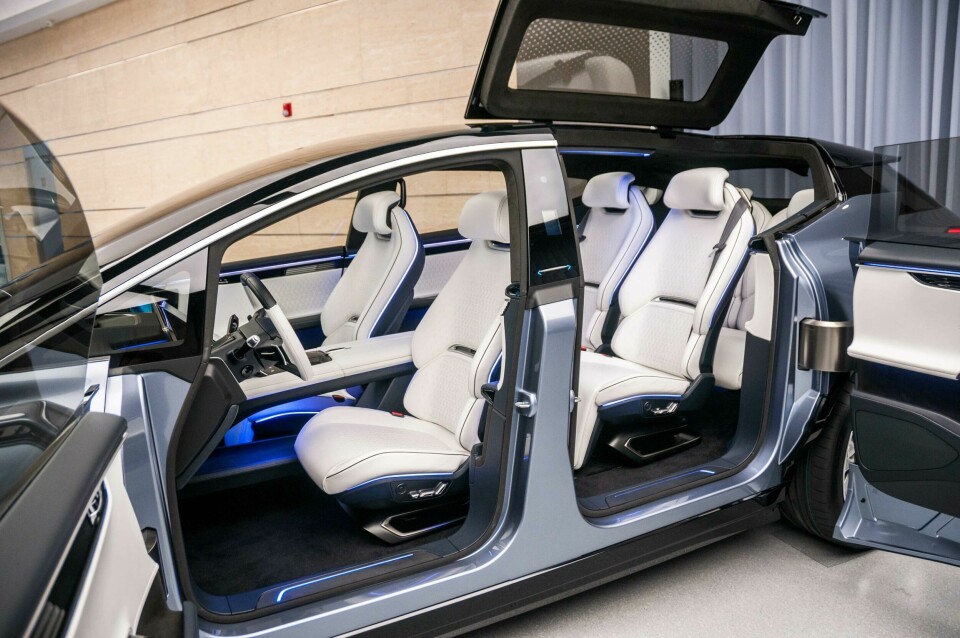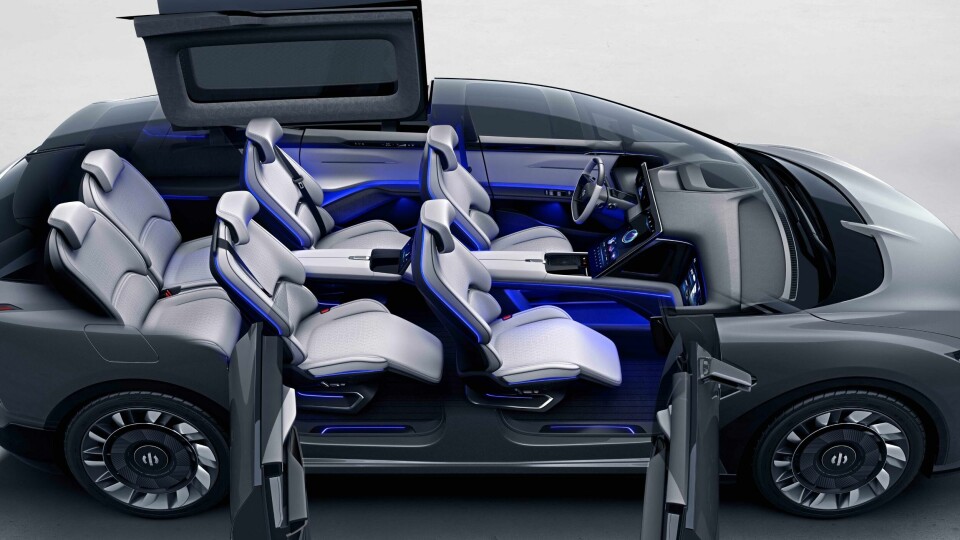
First Sight: Human Horizons HiPhi 1
At a spectacular launch event last week, Shanghai-based Human Horizons showed us its first production-ready protoype, a shooting-cross
Is the crossover MPV the shape of the future? Human Horizon’s is banking on it. At the unveiling of the company’s first production-ready prototype the HiPhi 1 on July 31 the company COO and co-founder Kevin Chen made the bold claim that there were in fact 69 types of car designs and that the new vehicle was the seventieth. At Human Horizons Shanghai studio, chief design officer and founding partner, James Shyr explained more with the aid of a chart. Many of the different styles such as estate, station wagon, Avant and even arguably shooting brake could be seen to owe as much to language as design.

“You have to know what you have been walked through to know whether what you are doing now is truly new. You have to know your history to get to the future,” says Shyr. Human Horizons are calling the HiPhi1 a shooting cross. Looking at the silhouettes of many of the electric SUVs available internationally and on the Chinese market the team found that they all adhered to generally the same shape. “We came up with the general conclusion that more than a quarter of the space is allocated for the powertrain. I am not here to do another SUV, we thought we could minimise the non-humanity area. After all it is humans that buy the car and we call ourselves Human Horizons so we put humans first,” explains Shyr. In fact, many of the existing electric cars owe more to the dimensions of internal combustion engined vehicles.

“The external environment including technology is changing and human behaviour is also changing. We can’t stay ‘business as usual’; we have to have something new. Darwin said that when the environment changes new species eventually emerge. And this will eventually evolve into a paradigm shift,” says Shyr referring to his past as a Biology major.
By taking a different design approach Shyr and his team have pushed the interior cabin space to 113% of the competition. Crucial to this is the body on board (BOB) platform utilising a cowl-forward design. The result is 82% of the body space given over to occupants. Helping this is the asymmetric instrument panel, which HH says is a first. The front passenger is pushed forward of the driver and by doing away with the glove box a large screen provides what Shyr describes as akin to a first-class passenger seat experience in an airliner. In what HH refer to as two personalities four zones six entries the driver gets a wrap-round fighter cockpit inspired layout with cameras and screens replacing the mirrors, and touchpads rather than buttons on the steering wheel. “The driver and passengers experience have completely bi-polar personalities. A jet-fighter inspired cockpit is HiPhi 1’s first and foremost personality. Driving experience is a combination of sight, hearing and sensations” explains the lead interior designer Max Huang.

As a six seater, hence the six entries, the middle row gains commander seats which not only slide back and forth but laterally as well. There is also a slidable console for them. Internally black and white trim adds to what HH refers to as ’zero gravity design philosophy’. Reducing the environmental impact are features such as vegan leather, recycled polyester, ocean waste yarns and recycled suede fabrics, along with the use of natural fibres.
Arguably, the most radical visual feature of the new design are the rear doors which HH are calling NT doors. Both rear doors feature a two section system. One hinges upwards like a gullwing while the other opens like a conventional rear hinged suicide door. “When Tesla (Model X) opens its door in the rain it gets real wet inside. With our door system you have a choice, you can do the coach door out or you can open your roof as well and walk out,” says Shyr going on to mention they paid particular attention to the ease of the elderly to egress and ingress the car.
Aero considerations have been built into the exterior design,with fins to aid stability. There are also, similar to the new Lotus Evija, tunnels to allow air not just to pass over the car but through it with air outlets just beyond the front wheels. To reduce drag and to aid users there are no door handles with doors opening when they sense the occupants by mobile phone, key or facial recognition. Despite the large proportions of the car - 5.2 metres with a 3150mm wheelbase - Shyr says that thanks to the four-wheel steering system the HiPhi 1 has a turning circle equivalent to that of a Toyota Corolla.

One of the early visual inspirations for the design was the crossbow which intersected with the shooting cross idea and gave some of the key physical characteristics of the design such as acceleration, kinetic dynamics and range. Later sculpting by light played a key element in the actual rendering of the car’s form. “A designer is like a conductor of light” says lead external designer Yao Yucheng going on to say they used an abstract form of light to give the car its shape.
Another extension of the light concept is how the car communicates with other road users. Using the world’s first application of second-generation programmable light projection headlights it gives a 93% increase in field of view and can silhouette objects such as pedestrians. Equally, using intelligent signal display (ISD) it can communicate to the outside where the car is reversing.































